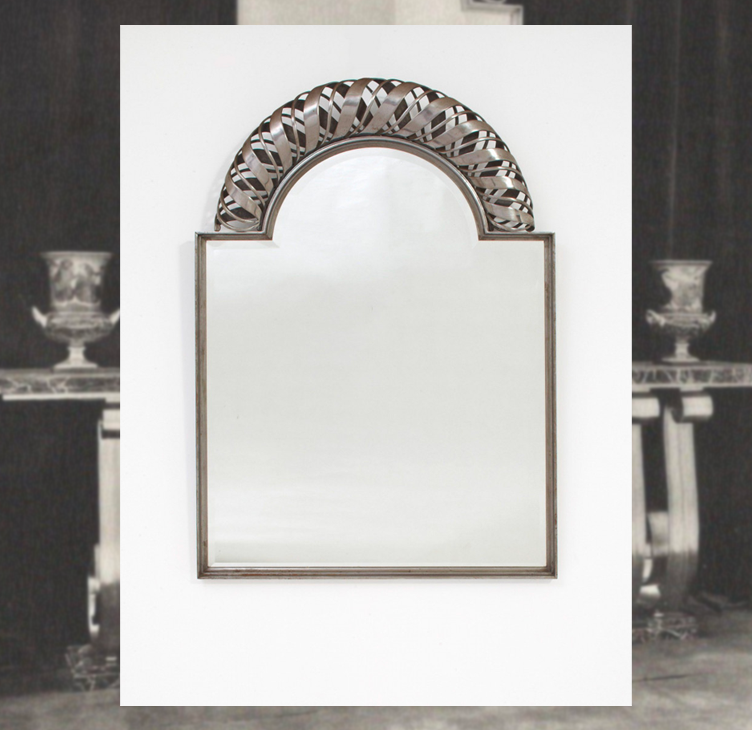Raymond Subes, an innovative iron language
Born in 1891, Raymond Subes attended the famous Ecole Boulle where he learnt the art of chiseling and then studied at Ecole des arts décoratifs where he learnt architecture under the guidance of Charles Génuys. He started his career as a drawer in the prestigious E.Robert’s and E.Borderel ironworking studio. This apprenticeship as an iron craftman combined with his architectural formation enabled him to master ironwork at all scales including monumental ones.
Émile-Jacques Ruhlmann and Raymond Subes
Patinated iron and marble console Table, circa 1929
© Sotheby’s
After an injury in 1916 which compels him to quit the military forces, R.Subes starts dedicating himself to the art of forgery with his master E.Robert who had already overseen him during his apprenticeship a few years earlier.
Just as Viollet-le-Duc, Raymond Subes support the middle-age tradition and wishes to reinvent it through a new iron language more formal. However he doesn’t reject new industrial techniques which he regularly resorted to create various pieces.
Raymond Subes
A wrought-iron mirror with volute, circa 1940;
© Artcurial
On the occasion of the Art and Technique Exhibition in 1937, the blacksmith displayed his talent through a dozen pavilion doors and fences designed by himself. He also showcased his taste for interior decoration with the presentation of a set of interior furnitures pieces and was in charge of the interior and exterior design of the Palais de Tokyo and Palais de Chaillot.
Raymond Subes resorted to iron to create various decorative elements giving them a massive aspect while keeping a lightness especially when it comes to furniture legs as if this strong material was malleable as the designer wishes it.
Raymond Subes and Sèvres
"Cobra" Covered Jar, 1943
Glazed porcelain, patinated bronze
© Sotheby’s
He would also collaborates with various other designers such as the ceramist Jean Mayodon, the Sèvres factory, Ruhlmann, Gilbert Poillerat or André Arbus with whom he created several bronze furniture for the Rambouillet castle. In the 1950s Subes will give a more abstract and humorous aspect to his works with the creation of various pieces while always staying true to the fundamentals of forgery.
Among the numerous notable projects Raymond Subes took part into one may not forget to mention his participation to the layout of the most prominent cruise ships of the 1930s such as the Île-de-France in 1926 and then Lafayette (1930), the Atlantique (1931) and Le Normandie (1935).
Raymond Subes
Pair of monumental wrought iron andirons, circa 1930
© Wright Auction





